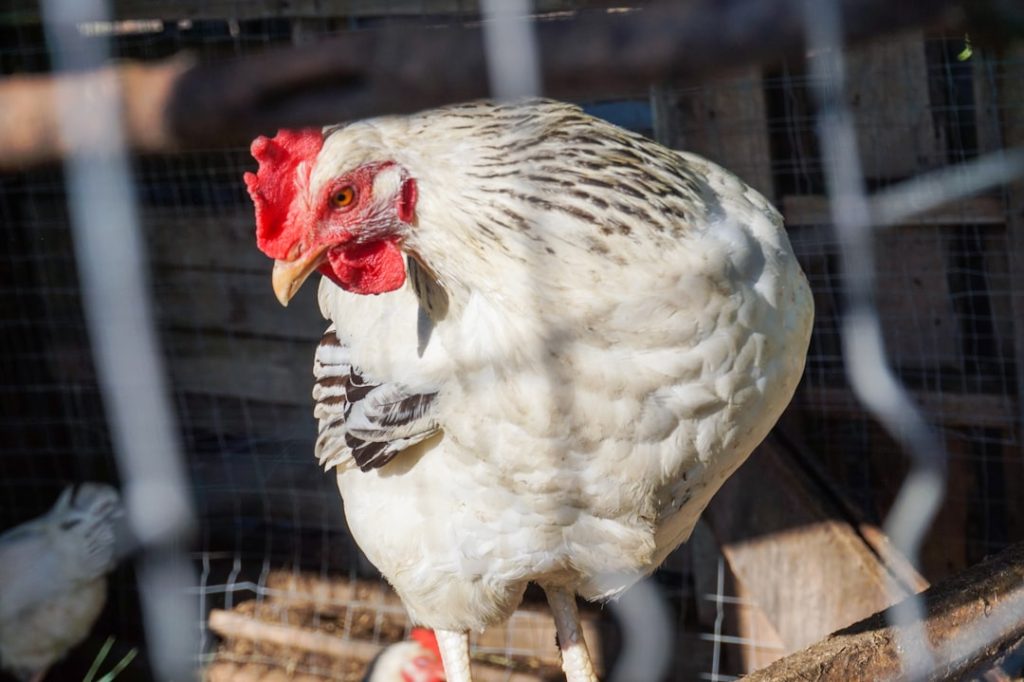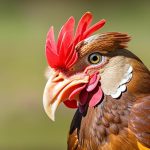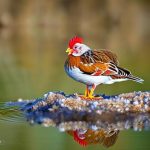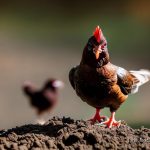Hawks are diurnal raptors renowned for their exceptional vision and predatory prowess. These birds are opportunistic hunters that target a variety of small animals, including rodents, rabbits, and chickens. Understanding hawk behavior is essential for developing effective strategies to safeguard poultry from these aerial predators.
Hawks typically hunt during daylight hours, utilizing their acute eyesight to locate potential prey from elevated positions. They are territorial birds, often defending their hunting grounds against other hawks. Hawks employ stealth and speed in their hunting techniques, relying on the element of surprise to capture their prey.
These raptors demonstrate remarkable adaptability in their hunting methods, adjusting their strategies based on prey availability. If chickens are easily accessible and alternative prey options are scarce, hawks may target poultry. Hawks are also known for their persistence, frequently returning to areas where they have successfully hunted before.
This behavior can pose a significant threat to chickens if a hawk identifies a coop as a reliable food source. By comprehending these behavioral patterns, chicken owners can implement proactive measures to deter hawks and protect their flocks from potential attacks.
Table of Contents
- 1 Implementing Physical Barriers to Protect Chickens
- 2 Using Visual Deterrents to Keep Hawks Away
- 3 Employing Sound Deterrents to Scare Off Hawks
- 4 Creating Safe Roosting Areas for Chickens
- 5 Supervising Free-Range Chickens to Prevent Hawk Attacks
- 6 Seeking Professional Assistance for Hawk Management
- 7 FAQs
- 7.1 What are some methods to keep hawks from killing chickens?
- 7.2 Do hawks pose a threat to chickens?
- 7.3 Are there any legal methods to deter hawks from attacking chickens?
- 7.4 What are some natural deterrents to keep hawks away from chickens?
- 7.5 Are there any specific breeds of chickens that are more resistant to hawk attacks?
Key Takeaways
- Hawks are opportunistic predators and are attracted to areas with easy access to prey, such as chickens.
- Physical barriers like fences and netting can effectively protect chickens from hawk attacks.
- Visual deterrents like scarecrows, reflective tape, and predator decoys can help keep hawks away from chicken coops.
- Sound deterrents such as wind chimes, predator calls, and distress calls can be used to scare off hawks.
- Providing safe roosting areas with overhead cover and hiding spots can help chickens avoid hawk attacks.
Implementing Physical Barriers to Protect Chickens
Implementing Physical Barriers
One effective way to safeguard chickens from hawk attacks is by installing physical barriers around the chicken coop and run. This can include building a sturdy fence around the perimeter of the coop, as well as covering the top of the run with wire mesh or netting to prevent hawks from swooping down and snatching chickens. Additionally, adding a roof to the chicken coop can provide extra protection from aerial predators.
Deterrent Effects of Physical Barriers
These physical barriers can help deter hawks from accessing the chickens and reduce the risk of attacks. By blocking their access, chicken owners can create a safer environment for their flock.
Visual Deterrents
Another physical barrier that can be effective in protecting chickens from hawks is the use of scare tape or reflective materials. These can be hung around the chicken coop and run to create visual disturbances that deter hawks from approaching. The movement and reflection of light off these materials can confuse and intimidate hawks, making them less likely to attempt an attack on the chickens.
Using Visual Deterrents to Keep Hawks Away
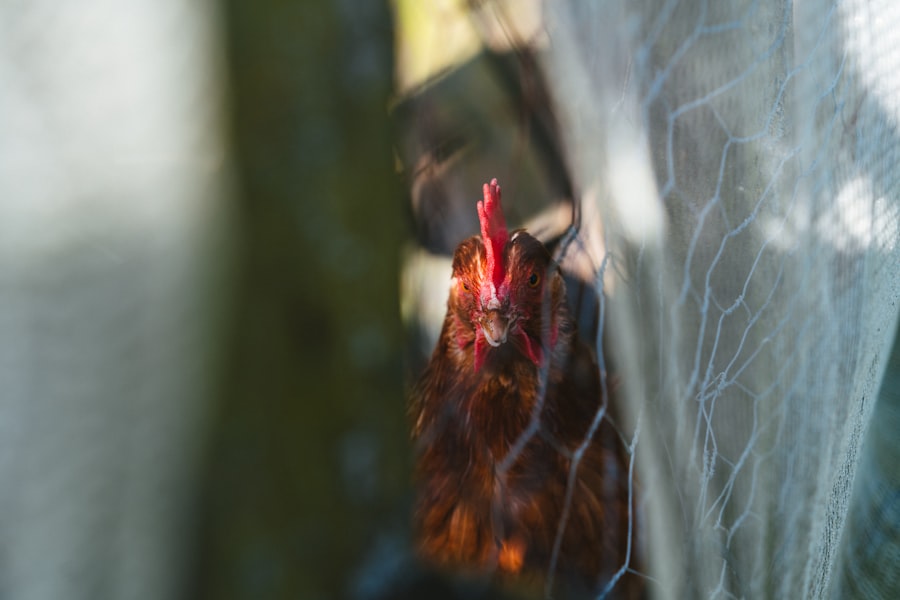
In addition to physical barriers, visual deterrents can also be effective in keeping hawks away from chickens. One common visual deterrent is the use of scarecrows or decoy predators such as owls or hawks. These decoys can be strategically placed around the chicken coop and run to create the illusion of a predator presence, which can deter real hawks from approaching.
Additionally, hanging shiny objects such as CDs or aluminum foil strips around the coop can create visual disturbances that make it difficult for hawks to focus on their prey, thus deterring them from attacking. Another visual deterrent that can be effective in keeping hawks away is the use of predator eyespots. These are large eye-like patterns that can be painted or attached to surfaces around the chicken coop and run.
The presence of these eyespots can create the illusion of being watched by a larger predator, which can intimidate hawks and discourage them from approaching the area. By using visual deterrents, chicken owners can create a hostile environment for hawks and reduce the likelihood of attacks on their flock.
Employing Sound Deterrents to Scare Off Hawks
Sound deterrents can also be effective in scaring off hawks and protecting chickens from potential attacks. One common sound deterrent is the use of predator calls or distress calls of other birds. These calls can create the impression of danger in the area, causing hawks to become cautious and hesitant to approach.
Additionally, using noise-making devices such as air horns or whistles can startle hawks and discourage them from attempting an attack on the chickens. Another sound deterrent that can be effective in scaring off hawks is the use of ultrasonic devices. These devices emit high-frequency sounds that are unpleasant for hawks and can drive them away from the area.
By employing sound deterrents, chicken owners can create a hostile environment for hawks and reduce the risk of attacks on their flock.
Creating Safe Roosting Areas for Chickens
Creating safe roosting areas for chickens is essential in protecting them from hawk attacks, especially during the night when they are most vulnerable. Providing secure and enclosed roosting spaces within the chicken coop can help protect chickens from aerial predators such as hawks. Additionally, ensuring that the coop is securely locked at night can prevent hawks from gaining access to the chickens while they are roosting.
Another way to create safe roosting areas for chickens is by providing natural cover such as trees or shrubs within the chicken run. These natural structures can provide additional protection for chickens by offering hiding spots and shelter from aerial predators like hawks. By creating safe roosting areas for chickens, chicken owners can minimize the risk of hawk attacks and provide a secure environment for their flock.
Supervising Free-Range Chickens to Prevent Hawk Attacks
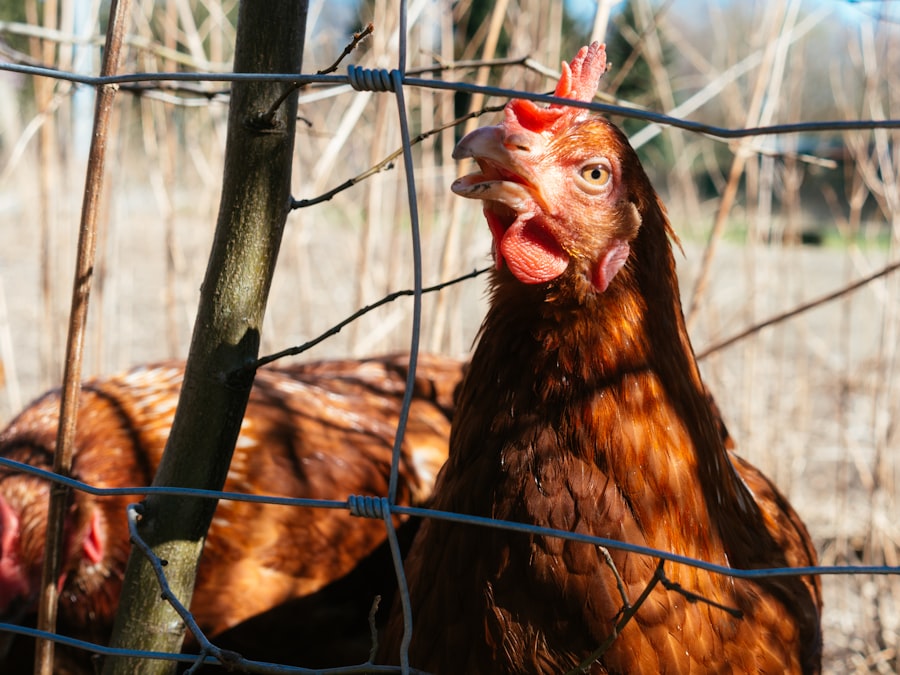
Active Supervision: The Key to Safety
Supervising free-range chickens is crucial in preventing hawk attacks and ensuring their safety. By keeping a watchful eye on the flock while they are out foraging, chicken owners can quickly intervene if a hawk is spotted in the vicinity. Additionally, supervising free-range chickens allows for immediate action to be taken if a hawk is seen approaching, such as using visual or sound deterrents to scare it off.
Designated Safe Areas for Foraging
Another way to supervise free-range chickens is by providing them with designated safe areas within the property where they can forage under close supervision. This can include using portable fencing or netting to create a secure enclosure for the chickens while they are free-ranging.
Minimizing the Risk of Hawk Attacks
By supervising free-range chickens, chicken owners can minimize the risk of hawk attacks and ensure the safety of their flock.
Seeking Professional Assistance for Hawk Management
In some cases, dealing with hawk predation may require professional assistance to effectively manage the situation. Wildlife experts or pest control professionals can provide valuable insight and expertise in implementing strategies to deter hawks and protect chickens. They may also offer specialized equipment or techniques that are not readily available to the average chicken owner.
Additionally, seeking professional assistance for hawk management may involve obtaining permits or licenses for certain deterrent methods or predator control measures. Wildlife regulations and laws may vary by region, so it is important to consult with local authorities or professionals who are knowledgeable about legal requirements related to managing hawk predation. In conclusion, understanding hawk behavior and implementing a combination of physical barriers, visual deterrents, sound deterrents, safe roosting areas, supervised free-ranging, and seeking professional assistance are all important strategies for protecting chickens from hawk attacks.
By taking proactive measures and being vigilant in managing hawk predation, chicken owners can create a safer environment for their flock and minimize the risk of potential harm from these aerial predators.
If you’re looking for ways to protect your chickens from predators like hawks, you may also be interested in learning about the best placement for your chicken coop. This article offers valuable tips on where to position your coop to keep your chickens safe and secure.
FAQs
What are some methods to keep hawks from killing chickens?
Some methods to keep hawks from killing chickens include using netting or wire mesh to cover the chicken coop, providing overhead cover for the chickens to hide under, and using scare tactics such as reflective objects or noise makers.
Do hawks pose a threat to chickens?
Yes, hawks are natural predators of chickens and can pose a threat to their safety. They are known to swoop down and attack chickens, especially in open areas where the chickens are easily visible.
Are there any legal methods to deter hawks from attacking chickens?
Yes, there are legal methods to deter hawks from attacking chickens. These methods include using non-lethal deterrents such as visual scare tactics or physical barriers to protect the chickens.
What are some natural deterrents to keep hawks away from chickens?
Some natural deterrents to keep hawks away from chickens include providing hiding spots for the chickens, such as dense shrubbery or trees, and using roosters to alert the flock of potential danger.
Are there any specific breeds of chickens that are more resistant to hawk attacks?
Some breeds of chickens, such as larger and more aggressive breeds like the Jersey Giant or the Brahma, may be more resistant to hawk attacks due to their size and ability to defend themselves. However, no breed is completely immune to hawk attacks.
Meet Walter, the feathered-friend fanatic of Florida! Nestled in the sunshine state, Walter struts through life with his feathered companions, clucking his way to happiness. With a coop that’s fancier than a five-star hotel, he’s the Don Juan of the chicken world. When he’s not teaching his hens to do the cha-cha, you’ll find him in a heated debate with his prized rooster, Sir Clucks-a-Lot. Walter’s poultry passion is no yolk; he’s the sunny-side-up guy you never knew you needed in your flock of friends!

